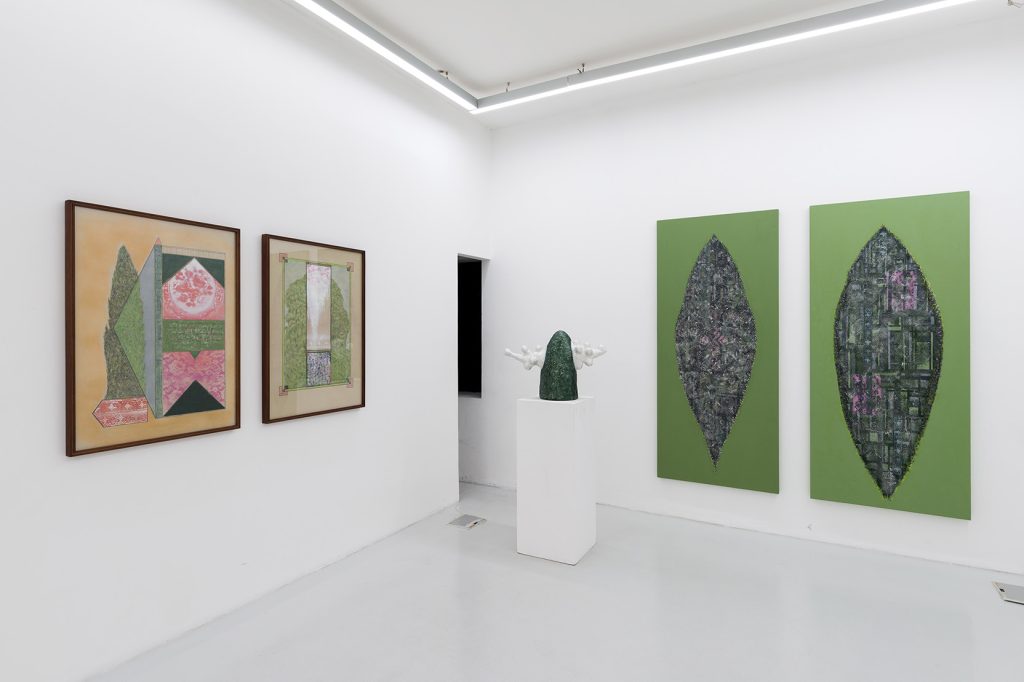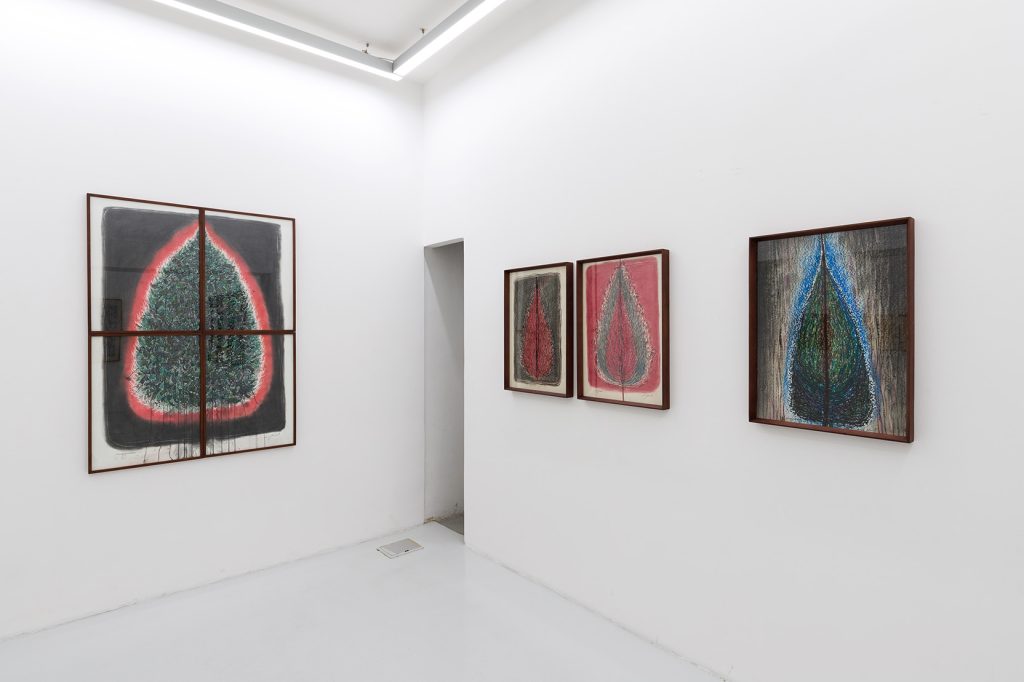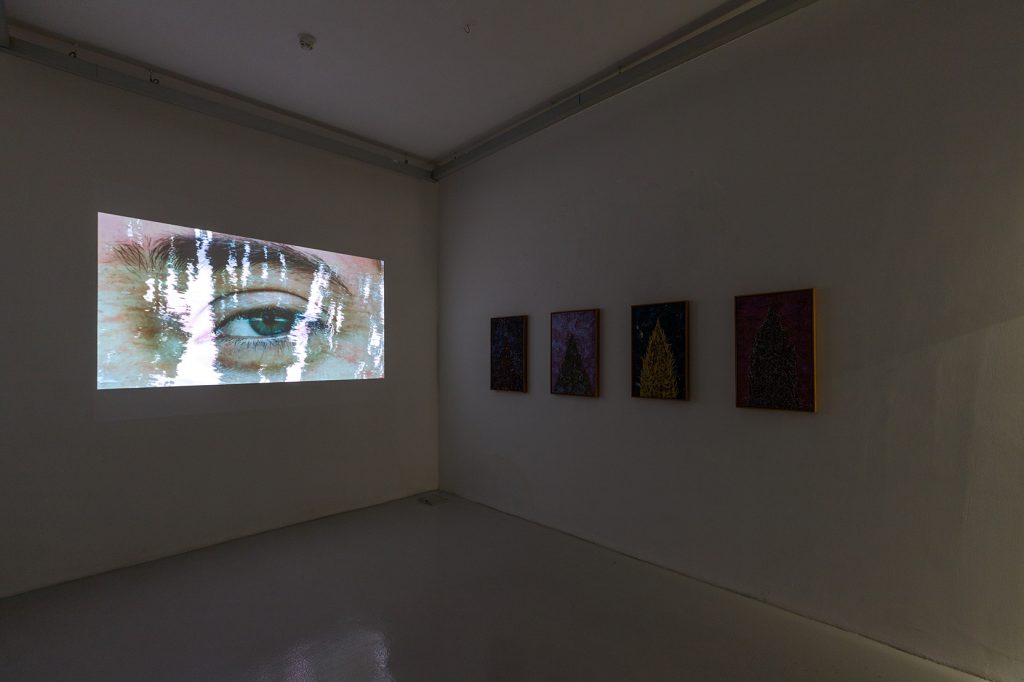Omid Bonakdar | Zoroaster’s Memento |
One person exhibition |
September 20 Until October 4 2024
Zoroaster’s Memento It has been exactly two years… Do you remember? It was during these days… The autumn weather, and this disturbed mood, filled with infuriated sadness and sorrow. Like others, I was looking for a way to find peace and tranquility to heal myself from this cumulative trauma until painting became my take. First flowers arrived; wilted flowers in an undying red surrounding, but this redness was only a reminder of a non-healing wound until you arrived… you emerged from a smog that had obscured my mind and soul. Your slim and delicate stature arose from the flowers, passed through the redness, became green, and to try to reach the light, it rose in peace. At that time, I wasn’t aware that the painting my hands were drawing was you. at that time, I didn’t know that among the Greeks and Romans, in affiliation with Pluto, you were known as the god of hell, and that’s why cemeteries are decorated with you. It was unknown to me that you are known as the symbol of mourning on Mediterranean shores. However, I heard you are interpreted as an emblem of immortality and resurrection due to your incorruptible gum and evergreen leaves. In Zhuangzi, it is stated, “The thick fog of winter will never be eradicated except by the strength of your resistance, which won’t become free from your leaves”. In ancient China, they believed that consuming your fruit brings longevity as well as believing that whoever puts your gum on his or her heel could walk on water. In the Avesta, you are mentioned as such, “A heavenly tree with leaves of knowledge and trunk of wisdom”. Zarathushtra with the Avesta, the always-lit fire, and you that are always green, presents his religion to Vishtaspa, and I have no doubt that this is the reason your familiar portrayal is seen everywhere in the visual culture of this land; from the figures and paintings of Persepolis to Iranian paintings and carpets. In the popular belief of our country, Zoroaster brought two pine branches from heaven to earth and planted them in two places in Iran. These two branches grew and turned into vigorous trees and this is the story of your birth. O dear cedar… O elderly cedar… O silent beholder of the history of this land and country. I ponder you and draw your portrayal. You who rose from my agitated thoughts, and at a time when I was shaking, and had a throat filled with screams chanted a poem about freedom and liberty, a poem concerning resistance; a poem as long as history. * Research resources for this exhibition: the book “The Dictionary of Symbols” (French: Dictionnaire des symboles) by Jean Chevalier and Alain Gheerbrant, and the book “Myths and Rites of Ancient Iran and Popular Beliefs” by Soodabeh Fazayeli.
Omid Bonakdar


